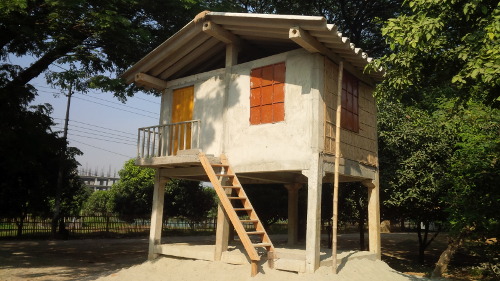Alternative bricks: A boon for agriculture

Bricks made of clay-rich soil have built civilizations but the consequences were pollution and loss of topsoil. A state-backed research body in Bangladesh has developed alternative brick-making techniques without using the topsoil of arable lands. This is perfectly in line with a law that discourages the use of topsoil for making bricks. Read the first tranche of a two-part report by Dhaka Tribune's Abu Siddique. Innovative building materials solution from a government-sponsored research firm in Bangladesh could answer the concerns about brick-making. Primarily, activists have two big problems with the way bricks have been made traditionally for hundreds of years: one, the carbon emission and the air pollution caused by the kilns; and two, the use of topsoil from agricultural lands as the main ingredient. Unlike the first problem about which pro-environment activists have been trying to raise awareness for many years, the second problem isn’t as publicised. So, why is using topsoil from agricultural lands for making bricks such a bad thing? For a country like Bangladesh whose economy depends heavily on agriculture, this is very bad. Every time the topsoil is extracted from a certain piece of land, it goes barren for at least three years which means nothing can be grown there over that duration. “Extracting the topsoil from arable lands leaves the land completely barren for at least three years. It takes three consecutive years of flooding, which carries silt on to arable lands, for the land to regain fertility,” said Hamidur Rahman, director general of the government’s Department of Agricultural Extension. Around 7,000 brick kilns in the country currently consume over 1.27 billion cubic feet of topsoil every year, says Bangladesh Brick Manufacturing Owners Association. “If the topsoil could be spared, we would have much higher agricultural production every year,” said Hamidur Rahman. Just like agriculture, bricks also need soil rich in clay content. There could be two possible ways to deal with this pressure on topsoil: either reduce the demand for bricks or find a way to make bricks with something else. Rising housing needs are an obvious consequence of rapid development; so demand for bricks cannot be reduced. Then again, agricultural Bangladesh must have exclusive rights on the topsoil. Bangladesh Housing and Building Research Institute (HBRI) has over the years developed several types of bricks without using clay-rich topsoil from arable lands. Compressed Stabilised Earth Bricks (CSEB), Interlocking CSEB, Concrete Hollow Block, Thermal Block, Aerated Concrete and Ferro-cement Sandwich Panel are some of the techniques for making such bricks. They might all sound too technical but there is one thing common about all of them – none of these require the clay-rich topsoil for making bricks. Alternative ingredients include soil dredged from the bottom of rivers, sand, cement and iron net.
Read more: http://www.dhakatribune.com/bangladesh/environment/2016/12/18/alternative-bricks-boon-agriculture/

